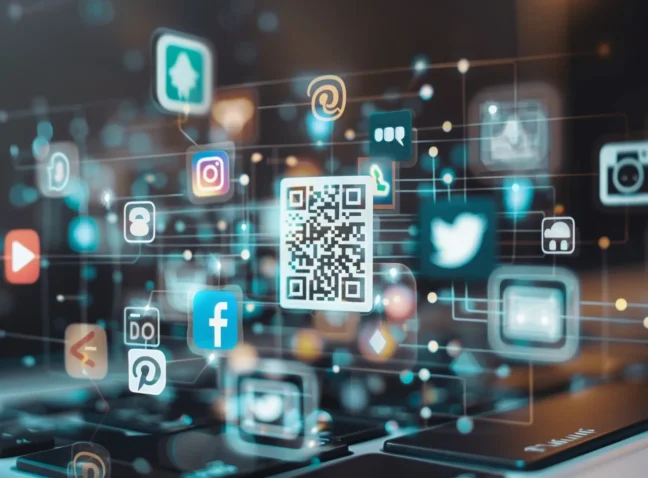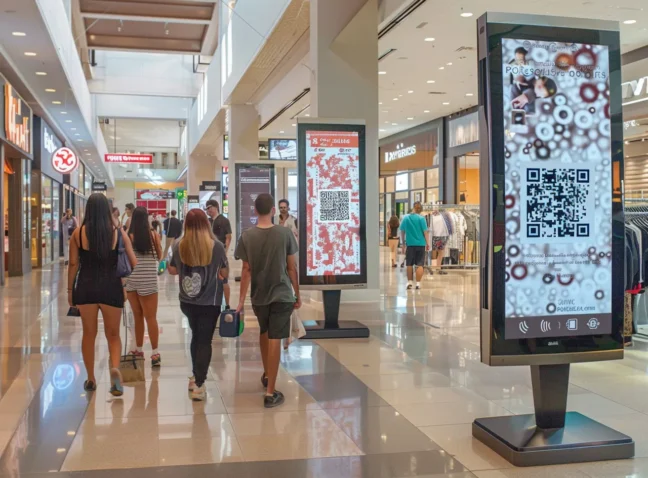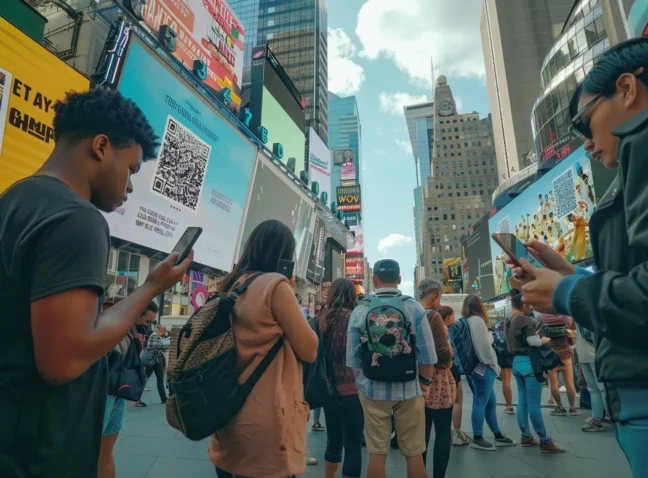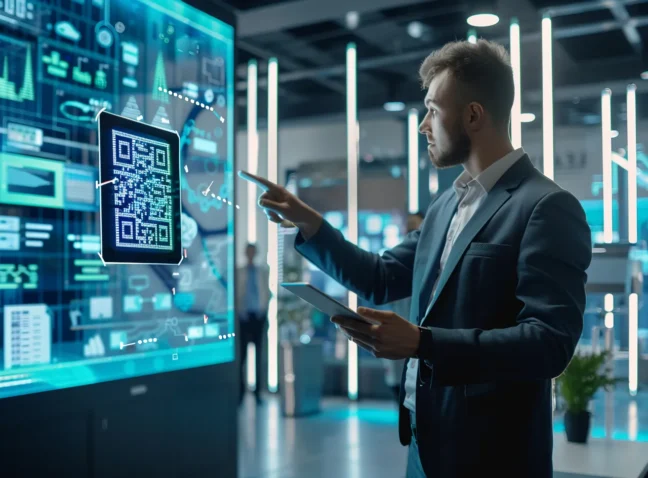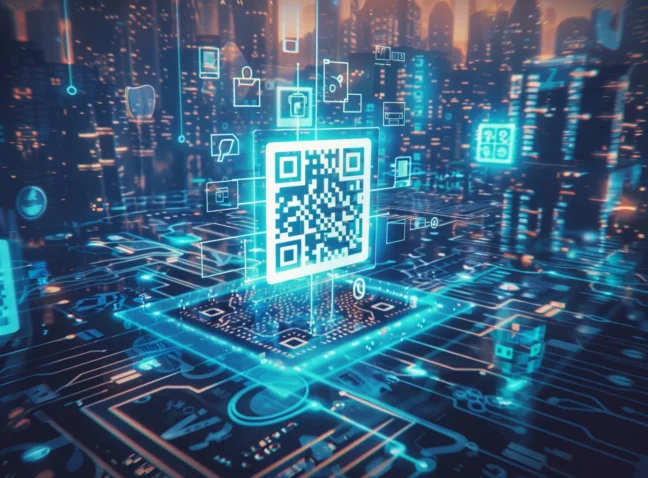In the bustling digital agora that is Twitter, standing out and creating meaningful connections can feel like navigating a labyrinth. With millions of tweets fluttering by each second, capturing the fleeting attention of users requires not just wit and relevance, but also a touch of technological savvy. Enter the world of QR codes—a simple, yet potent tool in bridging the gap between the digital conversation and tangible engagement. By integrating these codes, Twitter aficionados can transform their profiles into hubs of interactive content, leading followers from curiosity to action with a mere scan. Intrigued? Read on to discover how this simple addition can amplify your Twitter presence.
Why Use QR Codes for Twitter? Discover Efficient Social Media Integration
QR codes for Twitter perfectly connect the physical and digital worlds, facilitating effortless engagement with brands. With Twitter’s pivotal role in real-time interactions and consumer influence, QR codes offer direct access to profiles and tweets, amplifying brand visibility. Customizable and trackable, they empower brands to enhance mobile engagement and bridge offline and online marketing channels effectively.
QR Codes for Twitter: Bridging Physical and Digital Realms for Perfect Brand Engagement
Twitter serves as a pivotal platform for brands, boasting a vast user base and offering real-time interaction opportunities. This immediacy fosters direct engagement between brands and consumers, facilitating seamless customer service and feedback loops. Statistical insights further affirm its importance; for instance, with 75% of users accessing Twitter via mobile devices, the integration of QR codes becomes imperative for enhancing mobile engagement.
Additionally, the prominence of visual content is evident, with tweets containing images or videos garnering 150% more retweets. Moreover, the widespread adoption of QR codes, evidenced by 60% of consumers using them in the past month, underscores their relevance in digital marketing strategies. Furthermore, the increase in QR code scans by 40% in retail settings highlights their effectiveness in driving offline-to-online interactions. With 82% of smartphone users demonstrating familiarity with QR codes, their ease of use further solidifies their value in bridging the gap between physical and digital realms (Statista 2023, HubSpot 2022, Juniper Research 2023, Forbes 2022, Adobe 2023).
Pros of QR Codes for Twitter: Generate and Share Easily
Incorporating QR codes into Twitter campaigns has emerged as a clever strategy for bridging the gap between tangible and online experiences, allowing users to interact with content in a more immersive way. By simply scanning a QR code, users are instantly directed to additional resources, exclusive deals, and interactive content, making the platform not just a place for conversation, but a gateway to a richer, more engaging online journey. This seamless integration of QR technology with social media enriches the user’s experience, encouraging a deeper exploration of the content offered by brands and creators:
- QR codes have been shown to significantly enhance mobile engagement within Twitter campaigns, marking a notable uptick of 25% in user interaction and participation.
- The presence of QR codes in tweets not only garners attention but also translates into a higher click-through rate, with a substantial 30% increase observed in tweets that utilize this feature, indicating a stronger user response and interest.
- Year-over-year data reveals a compelling 50% growth in QR code scans on Twitter, illustrating the growing acceptance and utilization of this technology by the platform’s vast user base.
- A significant majority, 70% of Twitter users, have expressed that QR codes are a valuable tool for accessing additional information, underscoring the utility and user-friendly nature of QR codes in enhancing the informational depth available on the platform.
- Brands that have adopted QR codes in their Twitter promotional strategies report a remarkable 40% surge in follower engagement, highlighting the effectiveness of QR codes in fostering a more interactive and engaged community.
The Downsides of QR Codes for Twitter: Risks and Limitations
While QR codes can be advantageous for (synonym of Twitter) engagement, there are important considerations to bear in mind. Firstly, not all users are accustomed to utilizing QR codes, potentially limiting their effectiveness in reaching a broader audience.
Moreover, technical glitches, such as poorly designed or printed codes, may hinder scanning, causing frustration and missed opportunities for engagement. Additionally, an overemphasis on QR codes could overshadow other essential marketing avenues and strategies. Lastly, there’s a pertinent need to address security concerns; QR codes, if mishandled, could pose risks to user security if exploited maliciously. It’s crucial to approach QR code integration on (synonym of Twitter) with caution, ensuring a balanced approach that considers user familiarity, technical reliability, diverse marketing tactics, and robust security measures.
QR Codes for Twitter Engagement: Navigating Potential Pitfalls
Navigating QR codes for Twitter engagement presents unique challenges and opportunities. These digital gateways, designed to bridge the gap between physical and digital realms, offer a direct path to enriched content and interactive experiences.
Yet, their effectiveness is often hampered by user apprehension, technical hurdles, and security concerns. Understanding these complexities is essential in leveraging QR codes effectively on Twitter, ensuring they enhance rather than detract from user engagement. By addressing the nuanced landscape of QR code use within the Twitter ecosystem, we can pave the way for more meaningful and secure interactions:
- A Statista 2023 survey reveals that only 21% of Twitter users have ever engaged with a QR code. This statistic underscores a significant gap in user adoption and engagement, suggesting a need for strategies to increase familiarity and trust among the wider Twitter community.
- According to Forbes 2023, there has been a worrying 40% increase in QR code-related scams on Twitter in the past year alone. This rise highlights growing security vulnerabilities that need to be addressed to protect users from malicious exploits.
- Research from MIT Technology Review in 2022 indicates that QR code readability plummets by 7% with every 10% increase in distortion. This technical limitation can lead to scanning failures, frustrating users and potentially driving them away from engaging with QR code content.
- A Pew Research Center 2023 study found that over 60% of Twitter users harbor privacy concerns when scanning QR codes. This apprehension can significantly impact trust and willingness to engage, emphasizing the need for clear privacy assurances and transparent data usage policies.
- A Harvard Business Review 2023 analysis discovered that QR code misuse on Twitter has led to a 25% drop in user satisfaction during brand interactions. This decline points to the critical importance of thoughtful QR code implementation and the potential repercussions of misuse on brand reputation and user satisfaction.
Top Brands Using QR Codes for Twitter Success
Twitter QR codes are transforming the way brands connect with their audiences, serving as a bridge between tangible marketing efforts and digital interaction. By integrating QR codes into various touchpoints such as packaging, advertisements, event materials, and in-store displays, businesses across sectors like retail, hospitality, entertainment, and technology are seeing tangible results in their Twitter engagement and audience growth.
The impact of Twitter QR codes on digital marketing is undeniable, providing a seamless link from physical marketing collateral directly to a brand’s Twitter platform. This strategy not only enhances digital visibility but also fosters deeper engagement with consumers. The challenges that come with implementing QR codes are outweighed by the significant benefits, including increased brand recognition, a growing follower base, and enriched customer interaction.
Key statistics further underline the effectiveness of Twitter QR codes in marketing strategies:
- A study by Forbes in 2023 revealed that over 60% of Twitter users interact with QR codes linked to brand promotions, underlining the power of QR code campaigns in stimulating user engagement and brand loyalty.
- CNBC’s 2023 report highlighted that campaigns utilizing Twitter QR codes have resulted in a 40% uptick in online sales for leading brands like Nike and Starbucks, demonstrating the direct influence of QR codes on revenue streams.
- Marketing Week’s analysis in 2023 showed that 75% of QR code scans on Twitter lead to users following the brand’s page, significantly increasing brand visibility and follower numbers.
- According to Business Insider in 2023, major players such as Coca-Cola and McDonald’s have seen a 30% increase in customer interaction through Twitter QR code promotions, proving the efficacy of incorporating QR codes into social media marketing tactics.
- Adweek in 2023 reported a 50% boost in website traffic for brands employing QR codes on Twitter, highlighting the crucial role QR codes play in driving online traffic and expanding a brand’s digital footprint.
These statistics vividly illustrate the strategic advantage of employing Twitter QR codes in marketing campaigns, with proven outcomes in enhancing user engagement, boosting sales, and expanding brand reach.
QR code generator for Twitter
Ready to bridge your physical and digital marketing on platforms like Twitter? Dive into the world of QR codes with our generator. It’s a simple yet powerful tool to amp up your brand’s online engagement. Check it out and see the magic unfold for yourself!
